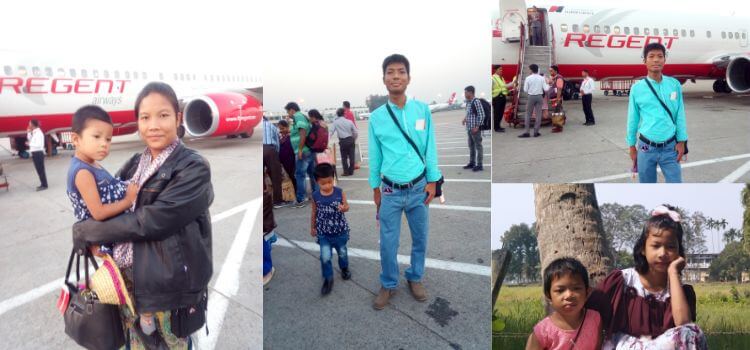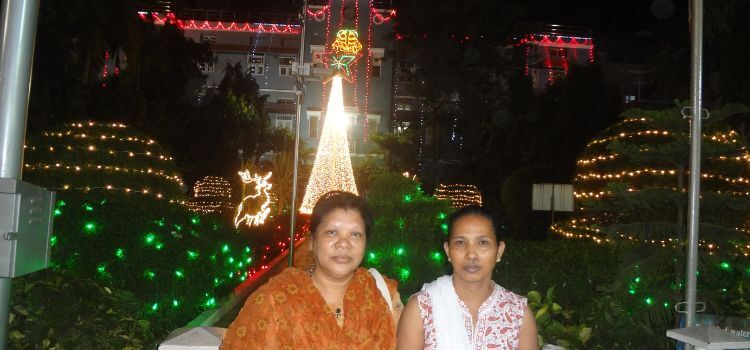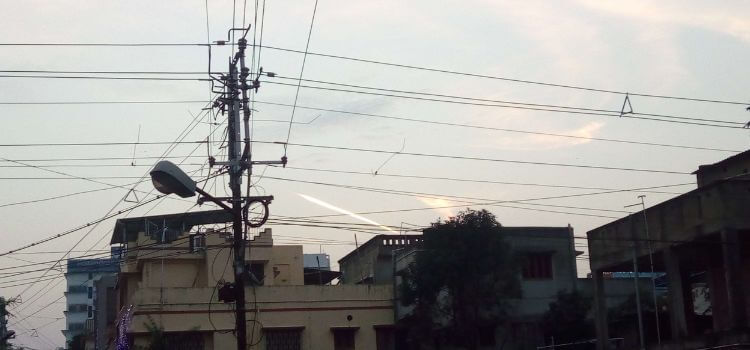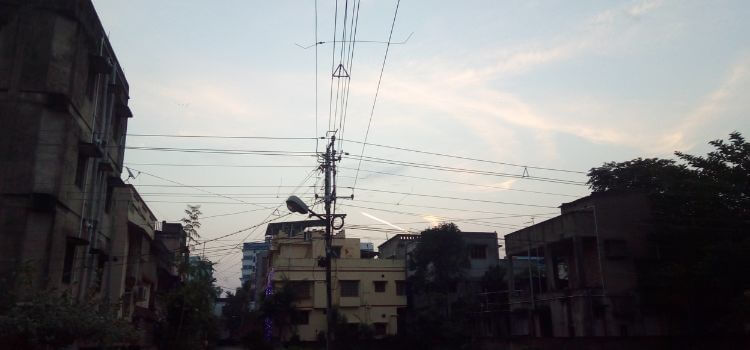As an Amazon Associate, I earn from qualifying purchases
When I was in India Kolkata West Bengal that time was 2016 and I, observed that electricity the power never goes out. But in Bangladesh now 2024 all around here the electricity power goes out maximum time. I a day electricity power goes out 4 to 5 times. And when it goes out that time the pwoer did not come for one hour even three hours. Bangladesh is now developing country but what is happen to Bangladesh there are no creativity.

In this article actually I am telling India and Bangladesh countries power specially electricity conditions. There are so many reason to continue the power of electricity . When I was Kolkata West Bengal that time I observed about electricity conditions. So I am now share my experience about power of electricity in India and Bangladesh.
Why Power never goes out
When I was India Kolkata West Bengal that time I observed that place In Mukundapur never power electricity goes out. But in Bangladesh all time the power goes out in every day.
Read More : My Life After Kidney Transplant
There are no cause and there are no limit in Bangladesh all time the power did not service as much as we want. Even in 2024 the electricity never keep service in 24 hours.
We are here in Bangladesh the electricity power all time goes out and many production factories are not produce enough products as they want.
Energy Infrastructure
Bangladesh: Here in Bangladesh the Power infrastructure is still developing and also corruption here and there. There are many power plants and national grid are insufficient and outdated to meet the growing demand.
Besides there are limitation in power generation capacity which causes a gap between demand and supply, leading to frequent load shedding.
India: Over the past few decades India has made significant improvement in this energy infrastructures.
India has invested heavily in modernizing its grid, increasing power generations, capacity and reducing transmissions loess.
Totally India has adopted more advanced technology to mange electricity distribution efficiently.
Power Generation Capacity
Bangladesh: The power generation capacity of Bangladesh is limited compared to its rapidly increasing population and industrial growth.
This often leads to a shortfall during Peak hours, specially when there high demand such as in the summer.
India: India has a much larger power generation capacity due to diverse energy sources including coal, hydro, nuclear, solar and wind power.

With a more extensive networks of power plants India can generate enough electricity to meet its domestic demand reducing the like hood of power outages.
Natural Gas
Bangladesh: From Natural Gas, Bangladesh got significant portions of electricity power. But the country has faced shortages in its supply, impacting power generation.
When natural gas supplies are insufficient power plats cannot operate al full capacity leading opt outages.
India: India has diversified its energy mix relying on various sources like coal, renewables and nuclear power.
Read More: I’m Kidney Transplant Patient Over come Covid19
This diversity provides a buffer during fuel shortages helping to ensure a more stable power supply.
Government policy and Investment:
Bangladesh : The country is working to improve this bad situation but suffer a long run for not take necessary action of power plan.
There are more challenges are corruption, bureaucratic delays and lack of fund.
India: This country’s government has prioritized the energy sector introducing reforms and attracting foreign investments.

Initiatives like Power for All and the increase use of renewable energy have strengthened the country’s power supply and reduced power outages significantly.
Policy Prioritization:
Bangladesh: The Bangladeshis government has recognized the need to improve its energy infrastructure but has faced challenges in execution.
Although there are policies aimed at increasing power generations and reducing outages the implementation has been slower due to to financial constraints and bureaucratic inefficiencies.
There is also heavy reliance on subsidies for rule imports which impact long term sustainability.
India: The Indian Government has prioritized the energy sector for many years.
Initiatives such as Power for all, Saubhagya. and the Ujwal DISCOM assurance Yojana (UDAY) have significantly improved electricity access and infrastructure.
Policies supporting the development of renewable energy, like the national solar mission have boosted energy production and diversified sources.
India’s focus on policy reforms and infrastructure investment has strengthen its energy security.
Domestic and Foreign Investment:
Bangladesh has been working to attract foreign investments of its energy sector but faced challenges due to perceived risk’s such as political instability and slower economic growth.
while the government’s signed deals with like China and India to build power planes, Lafe scale investment in modernizing the grid and increasing capacity remains limited compare to its needs.
India: This county successfully attracted significant foreigner and domestic investments in its power sector.

Private players international collaborations and public private partnerships’ have been instrumental in expanding generations’ capacity and modernizing infrastructure .
Read More My Life After Kidney Transplant
The countries economy stability and business friendly policies have encouraged investment sin renewable energy, coal based power plants and transmission networks.
Renewable Energy Initiatives:
Bangladesh: Bangladesh is beginning to explore renewable energy options with some government projects promoting solar energy.
However progress has been relatively slow and renewable energy still makes up a small portion of the country’s energy mix.
The government is working to scale up solar power in rural area but significant investments are required to make a meaningful impact.
India: India has made considerable progress in the renewable energy sector. The National Solar Mission aims to establish India as a global leader in solar energy and the coutny has become one of the largest procedures of renewable energy globally.
Government incentives for solar and wind energy have encourage investments, helping Indian diversify its energy spruces and reduce dependency on fossil fuels.
Grid Modernization and Smarts Technology :
Bangladesh the government has plans to improve the power grid and introduce modern technologies but these efforts are still in the early stages.
The limited use of smart grid technology means that the national grid struggles with inefficiencies, lading to more frequent outages. A larger portions of the government’s focus has been on expending access to electricity rather than modernizing existing infrastructure.
India: India has made significant strides in modernizing its grid infrastructure. Govt. pragmas have introduced smarts grid technology and energy management systems reducing transmissions and distribution losses.
These advancement’s allow India to handle energy demand more efficiently leading to fewer power disruptions’.
The adoptions of smart meters and real time energy monitoring also help’s optimize electricity usage.
subsides and pricing
Bangladesh government heavily subsidizes energy prices particularly for natural gas and electricity.
While this makes energy affordable for consumers, it also strains the national budget and limits funds available for reinvestment in infrastructure.
This pricing model can discourage private investment in the sector as profitability is harder to achieve under such regulated prices.
But other side India has gradually reduced subsidies in the energy sector allowing for more market driven pricing.
This has crated a more sustainable environment of investments. The Govt. has also introduced dynamic pricing in certain region which encourages consumers to use energy more efficiently during off peak hours.
This approaches has helped manage demand and improve the financial health of electricity companies.
Losses of Transmission and Distribution:
Bangladesh: In Bangladesh , high transmission and distribution losses are a major issue. The country’s outdated and inefficient gird system results in a significant amount of electricity being lost before in reaches consumers .
These looses further contribute to the frequent power outages.
India: India has made significate strides in reducing transmission and distributions losses by modernizing its grid infrastructure adopting smart grid technologies and improving overall energy management.
These improvements have helped reduce power cut’s,
Demand Management and Population:
Bangladesh: The rapid population growth and increasing industrial activities have lead to a sharp rise in electricity demand in Bangladesh.
However the infrastructure has not ben upgrades ate the same pace to accommodate this wave in demand, casing frequent overloads and power cuts.
Read More My Real Kidney Donor

India: Other side India has a large populations its ability to mange demand through better distributions and load management system has helped in avoiding frequent power cuts.
The use of smarts meters and demand side managements techniques in urban has also played a key role.
Population growth and energy demand:
Bangladesh has experienced and rapid population growth which has increased the demand for electricity.
The country’s infrastructure has struggled to keep up with this growing’s demand leading to frequent power shortages.
Industrial expansion urbanization and increased household energy consumption have put additional strain on the already stretched power grid.
The mismatch between supply and demand is a major reason for frequent power outages.
India also faces growing energy demand due to its large population and expanding economy.
However India has been more successful in planning for and meeting this demand.
Through proactive energy policies India has steadily increased its power generation capacity and developed better infrastructure to accommodate the rising consumptions’ levels in both urban and rural areas.
Demand side Management:
Bangladesh: Bangladesh Demand side managements DSM practices are not widely implemented in Bangladesh.
The Country lacks widespread use of smart meters energy efficient technologies and demand response program which could help manage peak loads and reduce strain on the power grid.
Without these tools energy consumptions is not optimized leading to frequent overloading of the system during high demand periods especially in urban areas.
India: India has adopted demand side managements strategies to a greeters extent. The introductions of smarts meters energy efficient appliances and time of day tariffs helps regulate and reduce energy consumptions’ during peak hours.
In urban areas particularly India has successfully implemented DSM program to flatten peak demand curves and prevent grid overloading .
Read More Spalding King of the Beach Volleyball: Ultimate Choice
This has contributed to fewer power outages during times of high demand.
Urban vs. Rural Energy Distribution:
Bangladesh: In this country Energy distributions is uneven between urban and rural areas. Urban areas generally receive more reliable electricity while rural areas face frequent load shedding and unreliable power supply.
As rural areas become more populated and industrialized the demand for electricity is rising , but the infrastructure is not expanding quickly enough to meet this demand.
India : Here it has made significant progress in electrifying rural areas, with the government launching initiatives to bring reliable electricity to every village .
The Sauvhagya Scheme is one such example that helped provide power to millions of rural households.
The focus on rural electrification, combined with energy management techniques has helped India manage the growing the demand in both urban and rural areas, reducing the gap in energy access.
Energry Efficiency Initiatives
Bangladesh: Energy efficiency is an area where Bangladesh is still developing. There are limited programs to encourage the use of energy efficient appliances or industrial practices.
As a result, energy is often wasted, further straining the already limited supply. The lack of public awareness and government initiatives in this area contributes to inefficient energy usage.
India: India has been a global leader in promoting energy efficient. Program such as the Perform, Achieve and Trade PAT scheme and Ujala( which promotes LED lighting) have led to significant reductions in energy consumption across industries and households.
These efforts help mange overall demand and reduce pressure on the power grid contributing to a more stable power supply.
Managing Peak Demand:
Bangladesh: Managing peak demand remains a challenge for Bangladesh. The power grid often struggles to handle high demand during certain periods such as the summer months when air conditioning use spikes.
This lead to frequent blackouts or load shedding during these peak times as the grid unable to meet the sudden surge in electricity usage.

India has implemented various strategies to mange peak demand more effectively . Time of day traffic encourage consumers to shift their electricity usage to non peak hours reducing the load on the grid.
Additionally India’s focus on renewable energy sources such as solar power help provide additional electricity during het day , when demand is often highest.
These measures have helped reduce the frequency of blackouts during peak demand periods.
In the conclusion I wanna speak out that India really takes many sustainable action to get and supply more power electricity energy for their country .
But Bangladesh also take best initiative action but they did not completed that fully in sustainable way.